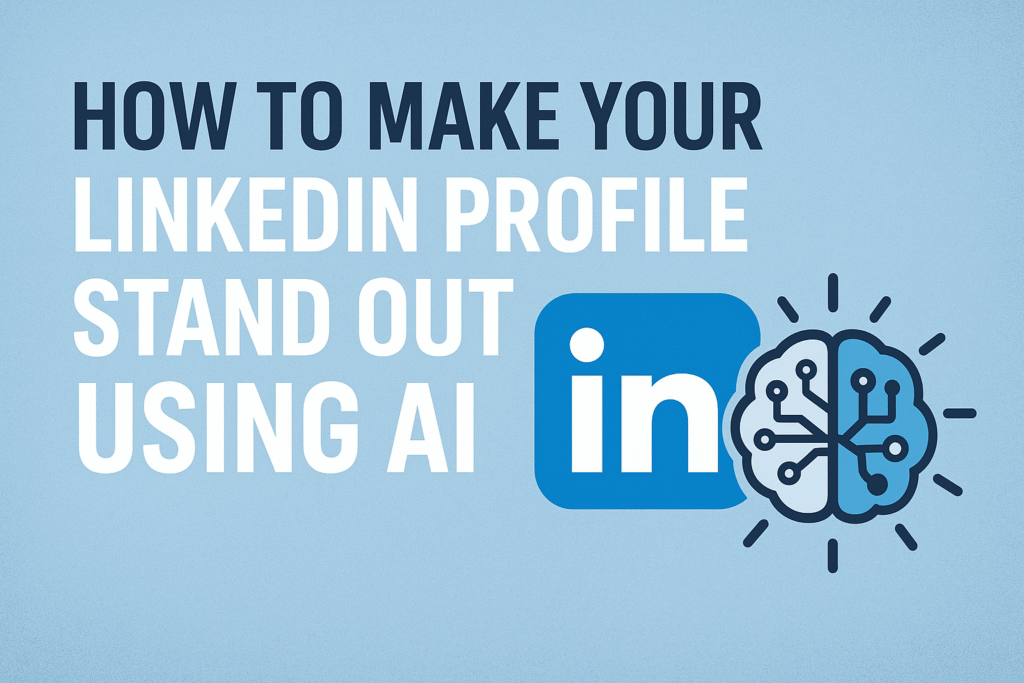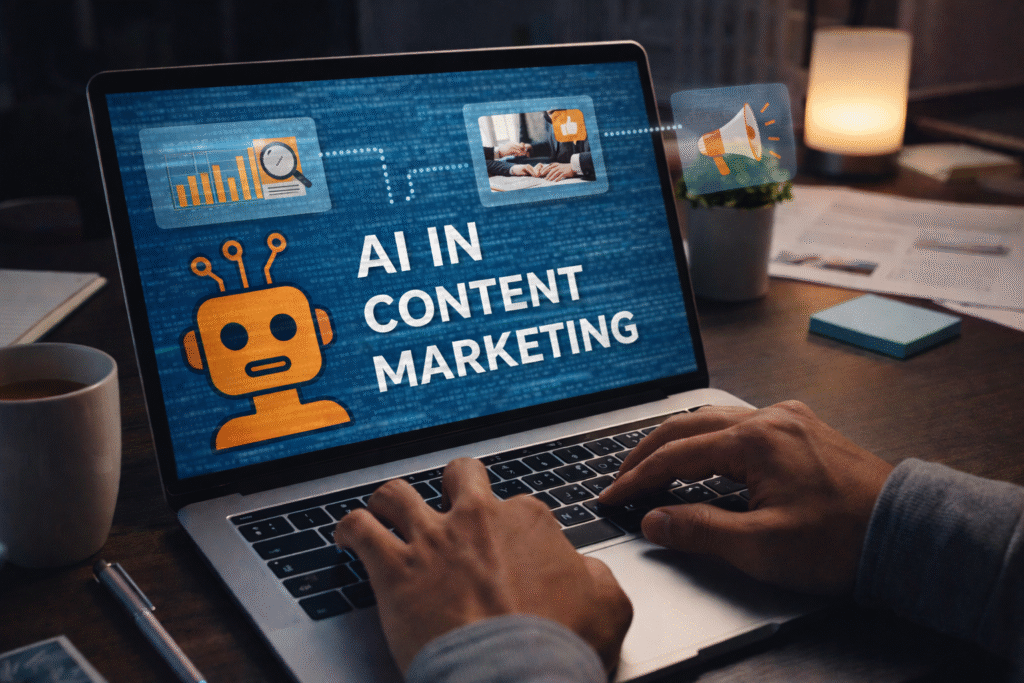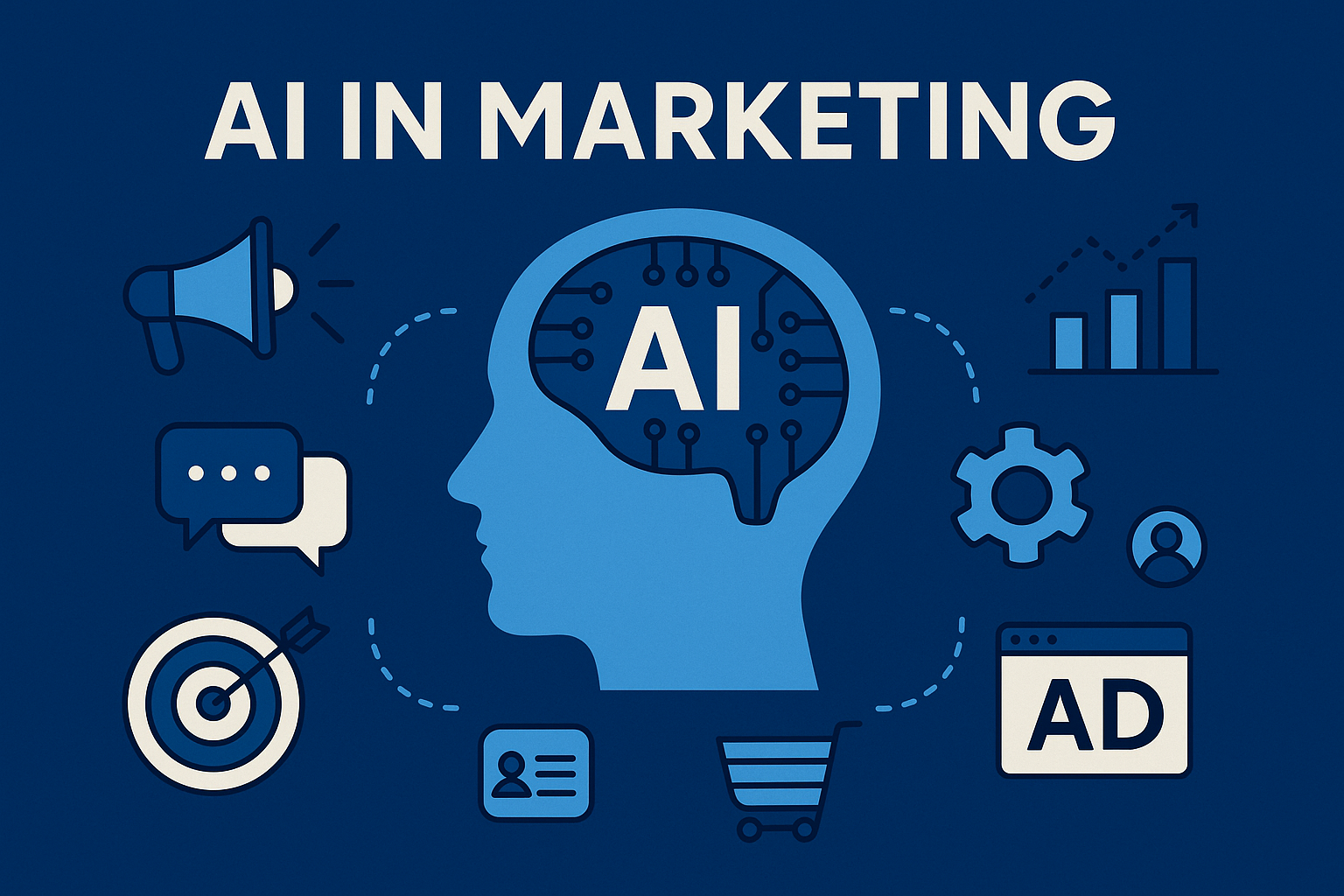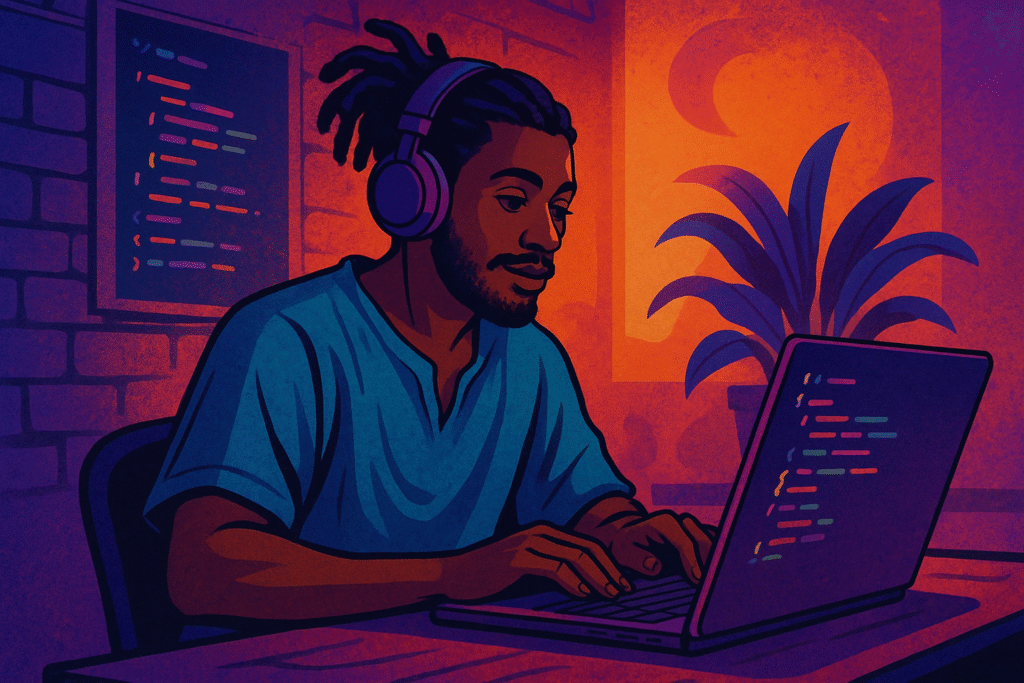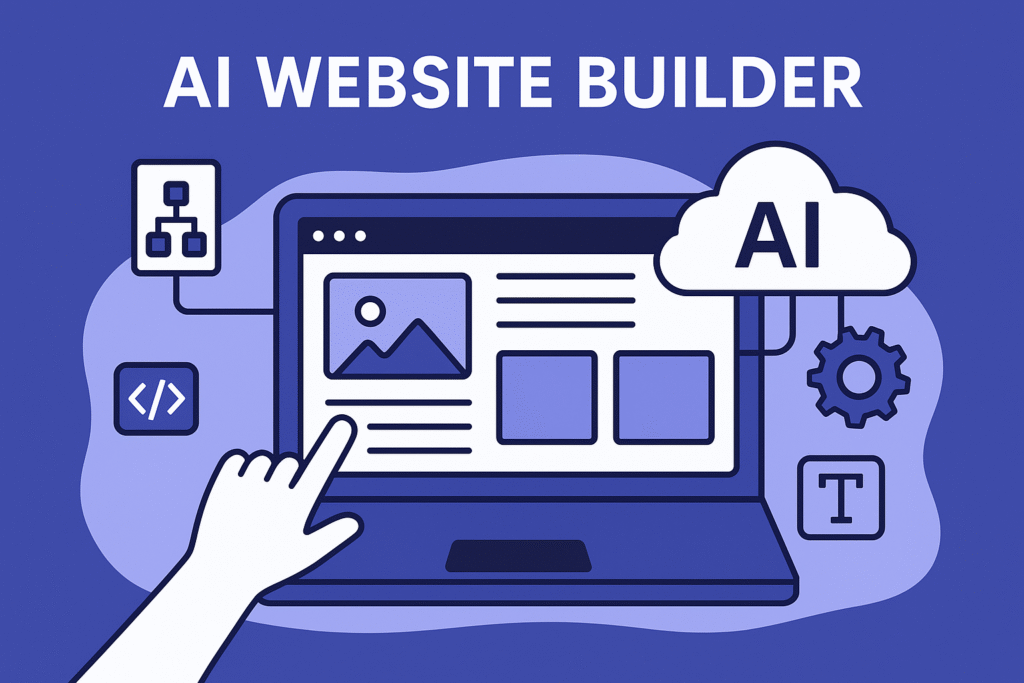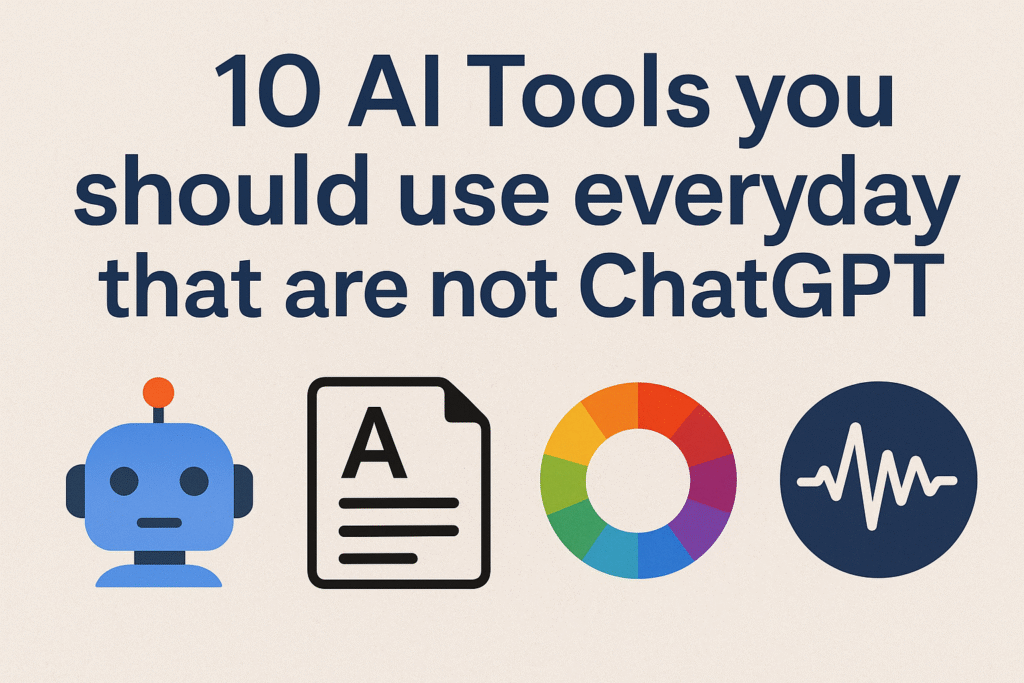Did you know recruiters spend just 6 seconds scanning your LinkedIn profile? That’s right – 6 seconds to make an impression while competing on a platform where 6 hires happen every minute.
With LinkedIn’s new AI Hiring Assistant automatically scanning profiles and serving up “best matches” based on your headline, skills, and experience, AI linkedin profile optimization is no longer optional, it’s essential.
The good news? LinkedIn now includes AI-powered suggestions to polish your profile, generating draft text for headlines and summaries using your work history and trending keywords. That’s why understanding how to use these ai tools for linkedin profile optimization can make all the difference.
We’ve discovered that profiles with updated skills and media content get twice as many views and four times more messages. Additionally, those who list both technical and soft skills are promoted 8% faster than those focusing solely on technical skills.
In this guide, we’ll share our expert tips on leveraging AI to make your LinkedIn profile stand out in 2025 and beyond.
Let’s transform your profile from invisible to job searching machine!
1. Why AI is Now Essential For Linkedin Success
Gone are the days when simply listing skills on your LinkedIn profile was enough to get noticed. The recruiting landscape has fundamentally changed with AI tools now powering how recruiters find and evaluate talent.
(i) How AI is changing recruiter behavior
LinkedIn’s AI-Assisted Search has revolutionized how recruiters discover candidates. Instead of manually filtering profiles, recruiters can now paste job descriptions directly into search tools that interpret their hiring intent. This AI-powered approach delivers better-qualified candidates by understanding context beyond standard keyword filters.
The impact is significant, AI-Assisted Messages help recruiters write personalized InMails more quickly, resulting in 40% higher acceptance rates from job seekers. Furthermore, two out of three recruiters report that AI tools save them valuable time.
(ii) Why keyword stuffing no longer works
Just as Google penalizes websites for keyword stuffing, LinkedIn’s AI algorithms now detect and devalue profiles that appear optimized solely for search rankings. Unlike traditional keyword-matching, modern AI systems understand context and semantic relationships between concepts.
Consequently, cramming your profile with repetitive industry terms actually works against you. LinkedIn’s AI can interpret qualifications not explicitly listed on profiles, focusing on the specific skills recruiters seek rather than exact keyword matches.
(iii) The shift from search to matchmaking
Perhaps most importantly, LinkedIn has evolved from a search platform to a sophisticated matchmaking system. The new AI Hiring Assistant automatically scans profiles to identify “best matches” based on what’s in your headline, skills, and experience sections.
LinkedIn’s “Job Match” feature uses generative AI to compare candidates’ experience against job descriptions at a deeper level. This contextual analysis means recruiters no longer simply search for keywords but instead receive AI-curated matches.
For professionals, this shift means your LinkedIn profile must be optimized not just for visibility but for relevance. Since AI now serves up the “best matches” based on contextual understanding rather than keyword frequency, thoughtful profile optimization using AI tools has become essential for career success.
2. Build A strong foundation for Linkedin Profile
Your LinkedIn profile’s foundation needs to be AI-ready to stand out in 2025’s competitive landscape. Building this foundation requires strategic optimization of three critical elements.
(i) Craft a clear and keyword-rich headline
Your LinkedIn headline, limited to 220 characters, functions as your digital elevator pitch. Moreover, it’s one of the first things people see in search results and when you comment or post.
LinkedIn’s search algorithm gives significant weight to keywords in your headline field, substantially boosting your profile’s ranking for specific terms. Consequently, avoiding the default “current job” headline is essential – instead, maximize this space with descriptive, relevant keywords.
A strong formula to follow includes your role, specialization, and value proposition.
| For example, rather than “Software Developer at XYZ Company,” try “ML Engineer | Computer Vision for Autonomous Systems | PyTorch Specialist”. This approach makes your headline more searchable and impactful for AI tools scanning your profile. |
| AI Tools To Use: ChatGPT / Jasper / Copy.ai – generate keyword-optimized, catchy LinkedIn headlines. Prompt example: “Create 5 LinkedIn headlines under 220 characters for a data analyst skilled in Power BI, SQL, and storytelling — make them professional yet engaging.” Result: You’ll get ready-to-use headlines highlighting your expertise and including strong keywords without sounding robotic. |
(ii) Write a compelling summary that tells your story
Your “About” section (limited to 2,600 characters) provides space to define yourself in your own words. This section must incorporate compelling language rich with keywords related to your objectives and skills.
Primarily, your summary should cover what makes you tick professionally, explain your present role, frame your past experiences, and highlight your successes. According to experts, this is where you can share your career story in a way that draws recruiters in.
| AI Tools To Use: ChatGPT / GrammarlyGO / Writesonic – to draft and polish your About section. LinkedIn’s built-in AI writing assistant (available in Premium) – it uses your experience and trending keywords to generate summaries automatically. Prompt example: “Write a professional LinkedIn summary for a marketing professional with 5 years of experience in digital campaigns, SEO, and brand storytelling. Keep it conversational and include measurable results.” Result: A personalized, keyword-rich summary that feels human — not like a copy-paste description. |
(iii) List relevant skills and quantify
Members who list at least one skill receive up to 2x more profile views and connection requests and up to 4x more messages. Equally important, LinkedIn allows up to 50 skills on your profile.
Choose skills strategically – nearly half (48%) of hirers on LinkedIn now explicitly use skills data to fill roles. Furthermore, professionals who list both soft skills and hard skills get promoted 8% faster than those who list hard skills only.
For maximum impact, list specific skills rather than generic umbrella terms. During your experience section, quantify achievements with exact metrics such as “increased sales by 20%” to provide concrete examples of your work.
| AI Tools To Use: SkillSyncer – analyzes your resume or profile against job descriptions to suggest missing or high-demand skills. Rezi.ai – scans your LinkedIn or resume content to match it with AI-based keyword optimization. Prompt example: “Scan this LinkedIn profile text and list missing top-demand skills for a data analyst role in 2025.” Result: You’ll know which technical and soft skills to add — boosting your profile’s relevance for AI hiring systems. |
3. Enhance Your Profile with Visual and Interactive Elements
Visual elements create immediate impact on your LinkedIn profile. Research shows profiles with professional photos are 14 times more likely to be viewed, making visual optimization essential for standing out in AI-driven recruitment.
(i) Add a professional photo and banner
Your profile picture should occupy approximately 60% of the frame with your face as the focal point. Avoid distant shots or group photos cropped to fit. For optimal quality, use images between 400×400 pixels and 7680×4320 pixels.
The banner image (recommended size 1584×396 pixels) functions as prime real estate for personal branding. This space can connect your presence with your brand, showcase your professional workspace, or highlight your expertise.
| AI tools to use: Canva Magic Design / Microsoft Designer – create professional LinkedIn banners or infographics automatically. Remini / Fotor / Photoleap – enhance your profile photo with natural lighting and clarity. Pictory / Synthesia – make short intro videos for your LinkedIn “Cover Story.” Prompt example (for Canva): “Create a LinkedIn banner that shows AI + finance theme with blue gradients and minimal text: ‘Helping Businesses Automate Their Accounts.’” Result: A polished, professional visual identity that aligns with your personal brand. |
(ii) Use the Featured section to showcase projects
The Featured section appears prominently below your introduction and above your Activity section, making it one of the first elements visitors notice. This section allows you to display:
- LinkedIn posts you’ve created or shared
- Articles published on LinkedIn
- External website links (portfolio, blog)
- Media uploads (images, documents, presentations)
Profiles with completed Featured sections receive up to 30% more profile views and connection requests.
(iii) Record a short video introduction using Cover Story
Cover Story allows you to create a 30-second vertical video introduction directly from the LinkedIn mobile app. The first three seconds preview as an animation over your profile photo, indicated by an orange ring.
Keep your video concise yet informative. Include who you are, what you do, and who you work with, revealing glimpses of your personality. For accessibility, consider creating captions using free tools before uploading.
4. Boost Visibility Through Engagement and Analytics
Creating an optimized LinkedIn profile is just the beginning. Now comes the active part – boosting your visibility through strategic engagement.
(i) Turn on Creator Mode and use hashtags
Creator Mode transforms your profile by replacing the “Connect” button with “Follow,” making it easier to build an audience without approving connections. This feature lets you showcase topics you post about using hashtags near your headline.
Choose up to five relevant hashtags that represent your expertise, such as #MarketingStrategy or #CareerDevelopment. Notably, users who activate this mode gain access to analytics showing post impressions and engagement.
(ii) Join industry groups and comment on posts
Joining LinkedIn groups connected to your field expands your network beyond immediate connections. Use the Search bar at the top of your homepage to find groups by name or keyword.
Primarily, groups offer valuable opportunities to demonstrate your expertise through thoughtful comments and sharing insights. This engagement showcases your knowledge to potential employers or clients.
(iii) Track profile views and search appearances with LinkedIn Analytics
LinkedIn’s analytics tools provide crucial insights into your profile’s performance. Simply click on the “Me” tab, select “View Profile,” then click the “Analytics” tab. Here you can track profile views, search appearances, and post engagement. Subsequently, use these metrics to refine your strategy and increase visibility.
Also Read: From Layoff to LinkedIn: A Guide to Reskilling for the AI Era
Putting All AI Tools Together
Here’s how your AI-powered LinkedIn workflow can look:
| S.No | Tasks | Recommended AI Tool | Outcome |
|---|---|---|---|
| 1 | Write headline | ChatGPT / Jasper | Keyword-optimized headline |
| 2 | Write About section | LinkedIn AI writer / GrammarlyGO | Engaging personal summary |
| 3 | Identify skills | SkillSyncer / Rezi.ai | Skills aligned with job market |
| 4 | Create visuals | Canva / Remini | Professional banner & photo |
| 5 | Post content | ChatGPT / Taplio | Consistent engagement |
| 6 | Analyze performance | Shield / Taplio | Data-driven insights |
| 7 | Optimize for recruiters | Jobscan / Teal | Higher match ranking |
| 8 | Write outreach messages | ChatGPT / Lavender | Personalized networking |
Conclusion
Optimizing your LinkedIn profile with AI tools has become essential rather than optional in today’s competitive job market. Your LinkedIn profile serves as your professional digital identity, and AI now plays a critical role in determining who gets noticed by recruiters.
Remember that a strong foundation starts with a keyword-rich headline and compelling summary. These elements help AI-based recruitment tools match you with relevant opportunities. Additionally, listing both technical and soft skills can accelerate your career progression significantly.
Visual elements make your profile more engaging. A professional photo increases your chances of being viewed, while the Featured section and Cover Story video give recruiters a better understanding of your capabilities and personality.
Active engagement matters just as much as profile optimization. Creator Mode, industry groups, and regular commenting on relevant posts expand your network and showcase your expertise. These activities signal to AI systems that you’re an active professional worth connecting with.
Track your progress through LinkedIn Analytics to understand what’s working. This data-driven approach allows you to refine your strategy based on actual results. As AI continues to evolve, staying adaptable with your LinkedIn strategy will ensure you remain visible to the right opportunities.
We hope these tips help you transform your LinkedIn profile from overlooked to outstanding. Start implementing these changes today, and you’ll likely see increased profile views, more meaningful connections, and better job opportunities in the AI-driven professional landscape of 2025 and beyond.
| Key Takeaways: Transform your LinkedIn profile from invisible to irresistible with these AI-powered optimization strategies that work in today’s recruitment landscape. • AI has revolutionized recruiting: LinkedIn’s AI Hiring Assistant now automatically matches candidates to jobs based on headlines, skills, and experience rather than simple keyword searches. • Build a strategic foundation: Craft keyword-rich headlines (220 characters max), write compelling summaries with quantified achievements, and list both technical and soft skills for 8% faster promotions. • Visual elements drive engagement: Professional photos increase profile views by 14x, while completed Featured sections boost visibility by 30% – use Cover Story videos for personal connection. • Active engagement amplifies visibility: Turn on Creator Mode, join industry groups, comment thoughtfully on posts, and track performance with LinkedIn Analytics to maximize your professional reach. • Quality beats keyword stuffing: Modern AI algorithms detect and penalize profiles optimized solely for search rankings – focus on contextual relevance and authentic professional storytelling instead. The shift from search-based to AI-matchmaking recruitment means your profile must be optimized for relevance, not just visibility. Profiles with updated skills and media content receive twice as many views and four times more messages, making these strategies essential for career success in 2025. |
FAQs
Q1. How can AI tools enhance my LinkedIn profile?
AI tools can analyze your profile and provide personalized recommendations to improve your headline, summary, and skills sections. They can help optimize your content for better visibility in recruiter searches and suggest relevant keywords to include.
Q2. What are the key elements of a strong LinkedIn profile foundation?
A strong LinkedIn profile foundation includes a clear, keyword-rich headline (220 characters max), a compelling summary that tells your professional story, and a comprehensive list of relevant skills. Quantifying your achievements and including both technical and soft skills can significantly boost your profile’s effectiveness.
Q3. How important are visual elements on LinkedIn?
Visual elements are crucial for engagement. Profiles with professional photos are 14 times more likely to be viewed. The Featured section can increase profile views by up to 30%, while the Cover Story video allows you to make a personal connection with viewers.
Q4. What is LinkedIn’s Creator Mode, and how can it benefit me?
Creator Mode replaces the “Connect” button with “Follow,” making it easier to build an audience. It allows you to showcase topics you post about using hashtags near your headline and provides access to analytics showing post impressions and engagement, helping you boost your visibility and influence on the platform.
Q5. How has AI changed the way recruiters find candidates on LinkedIn?
AI has transformed LinkedIn from a simple search platform to a sophisticated matchmaking system. Recruiters now use AI-powered tools that interpret job descriptions and match candidates based on contextual understanding of their profiles, rather than just keyword searches. This shift emphasizes the importance of optimizing your profile for relevance and authenticity, not just keyword visibility.
Also Read:
